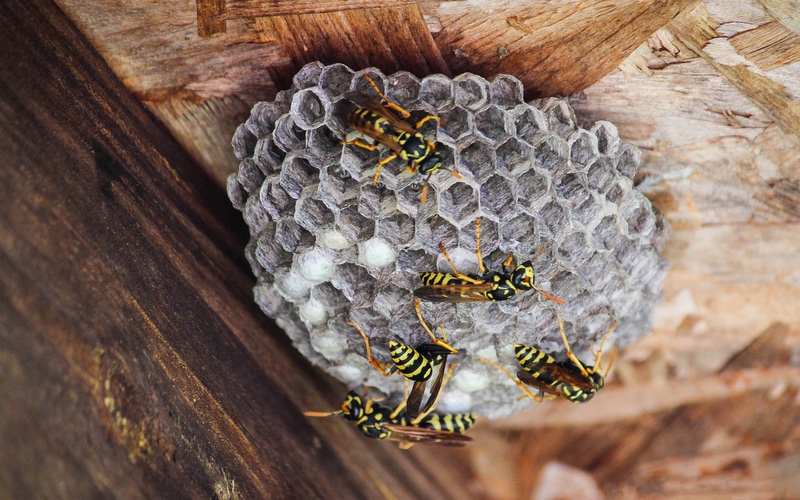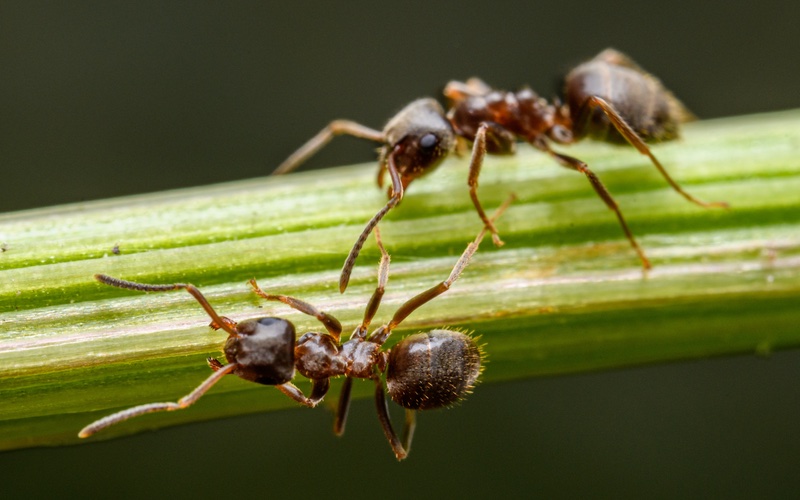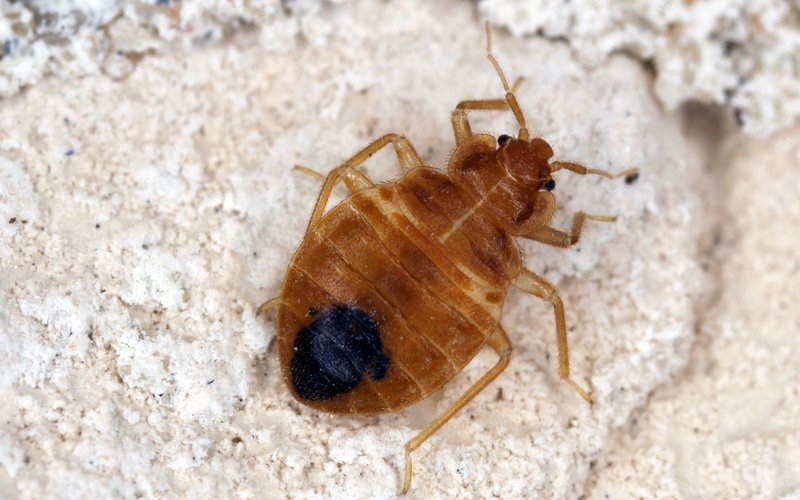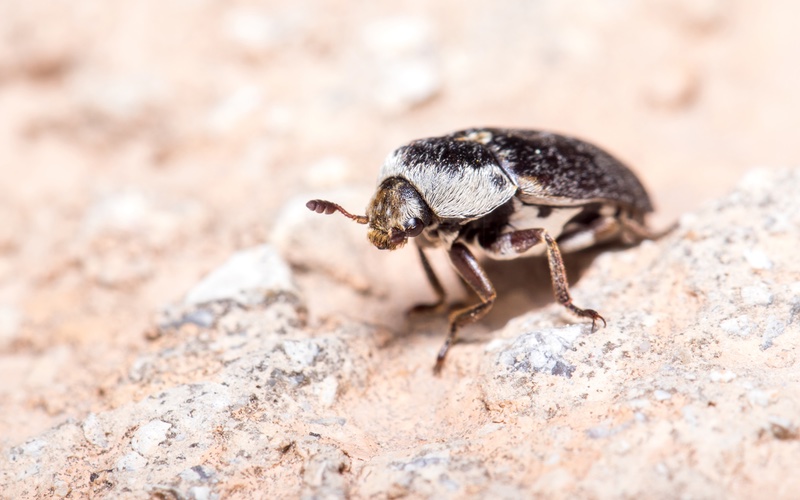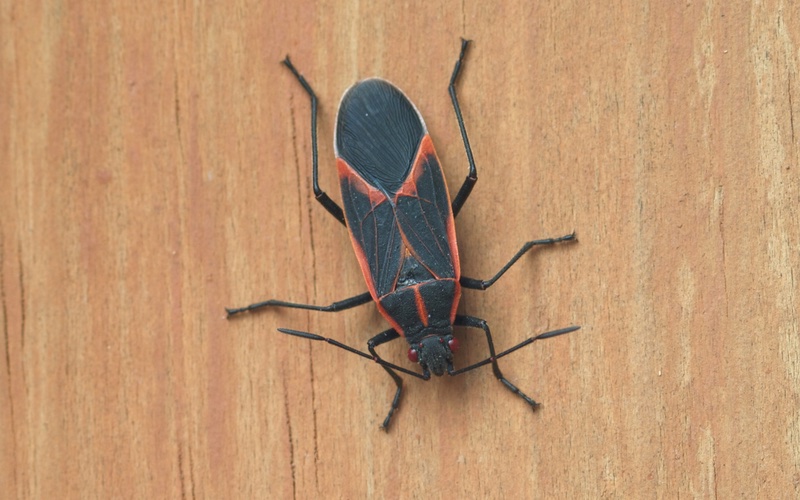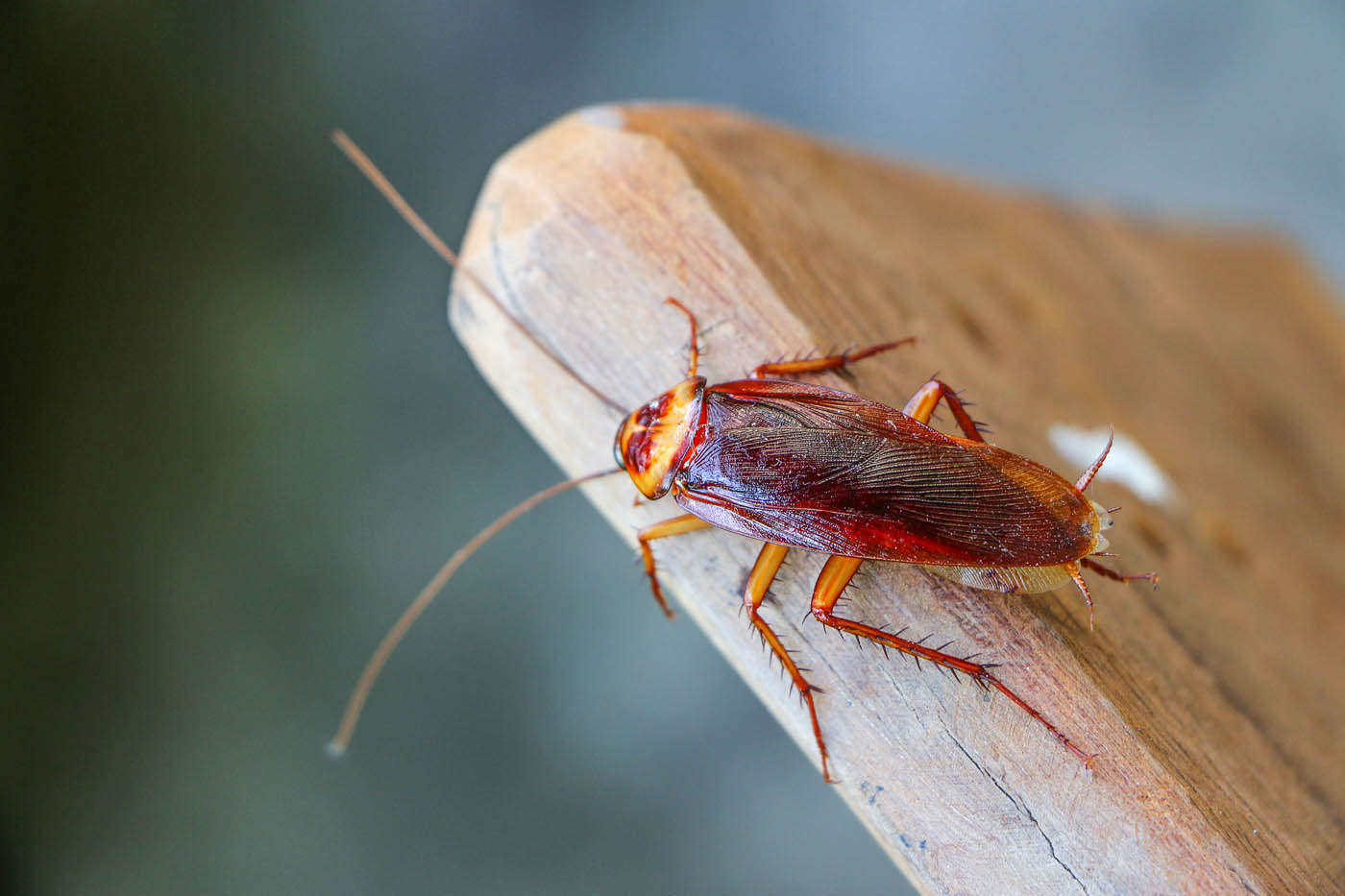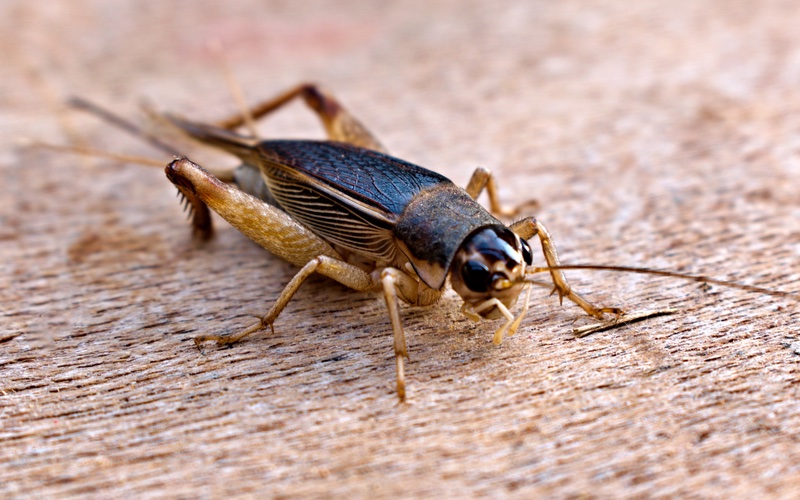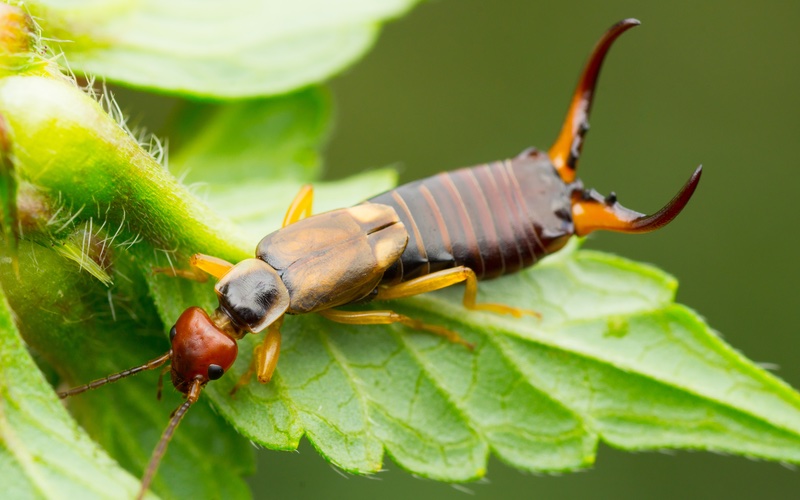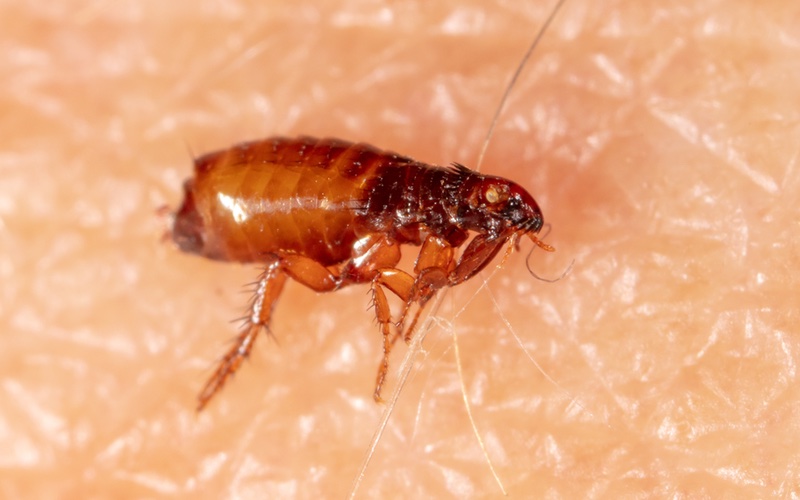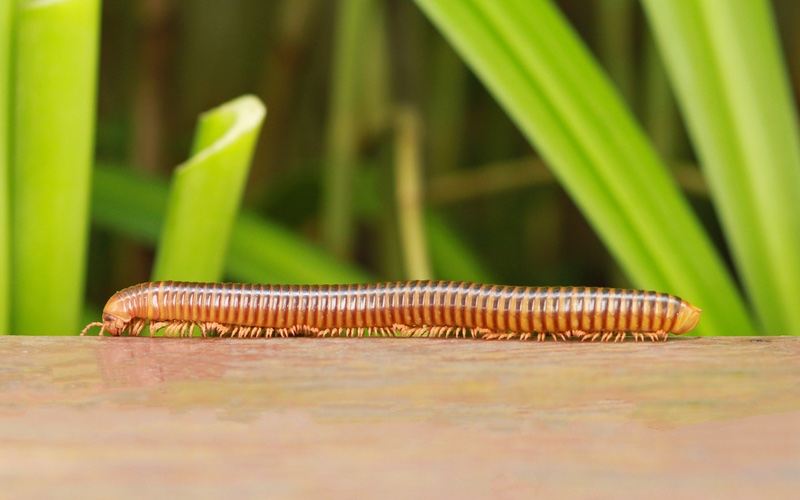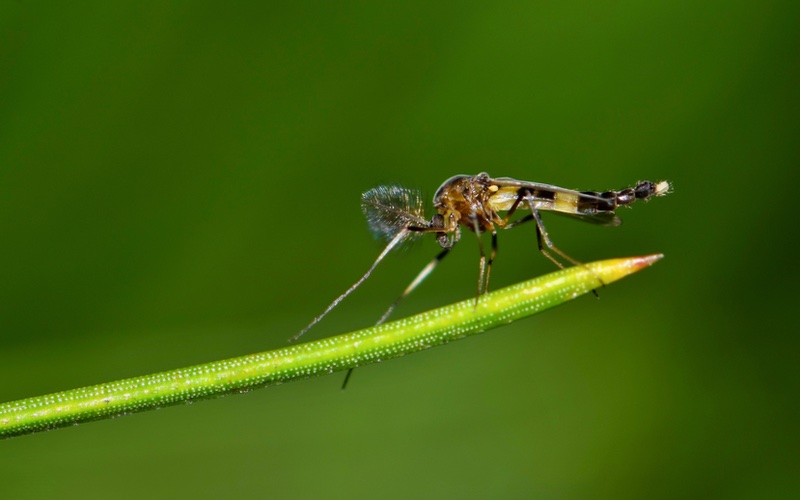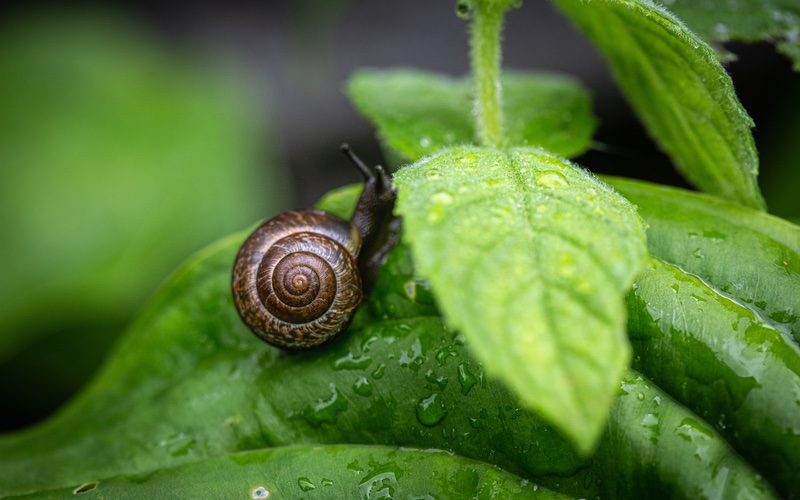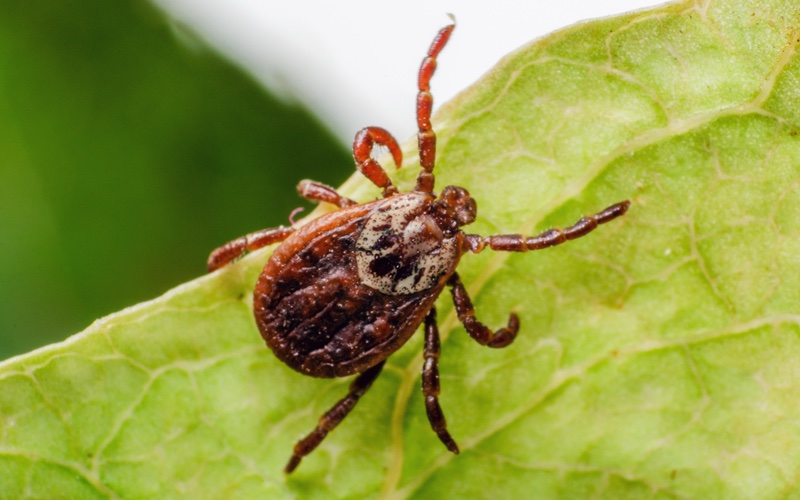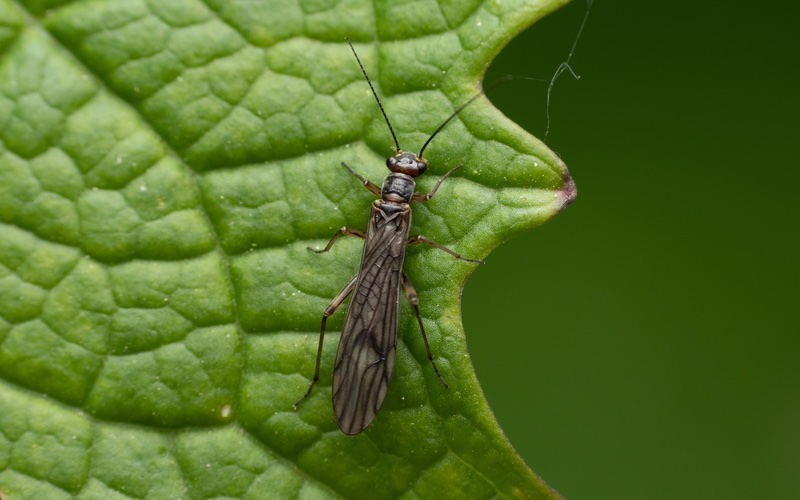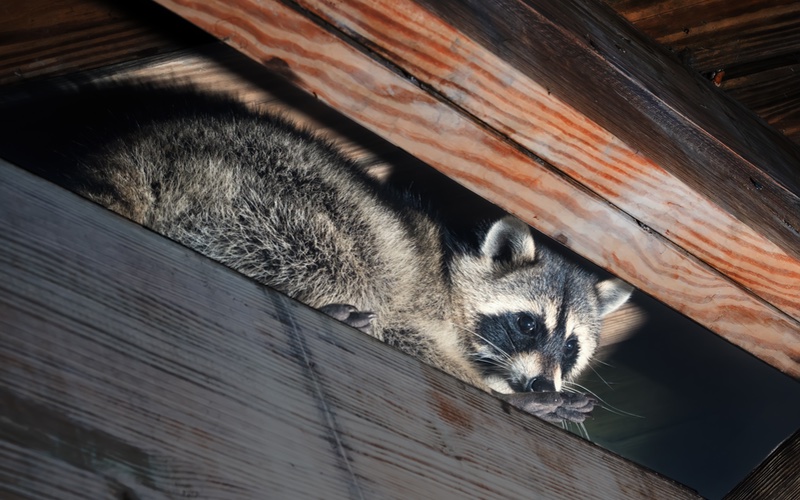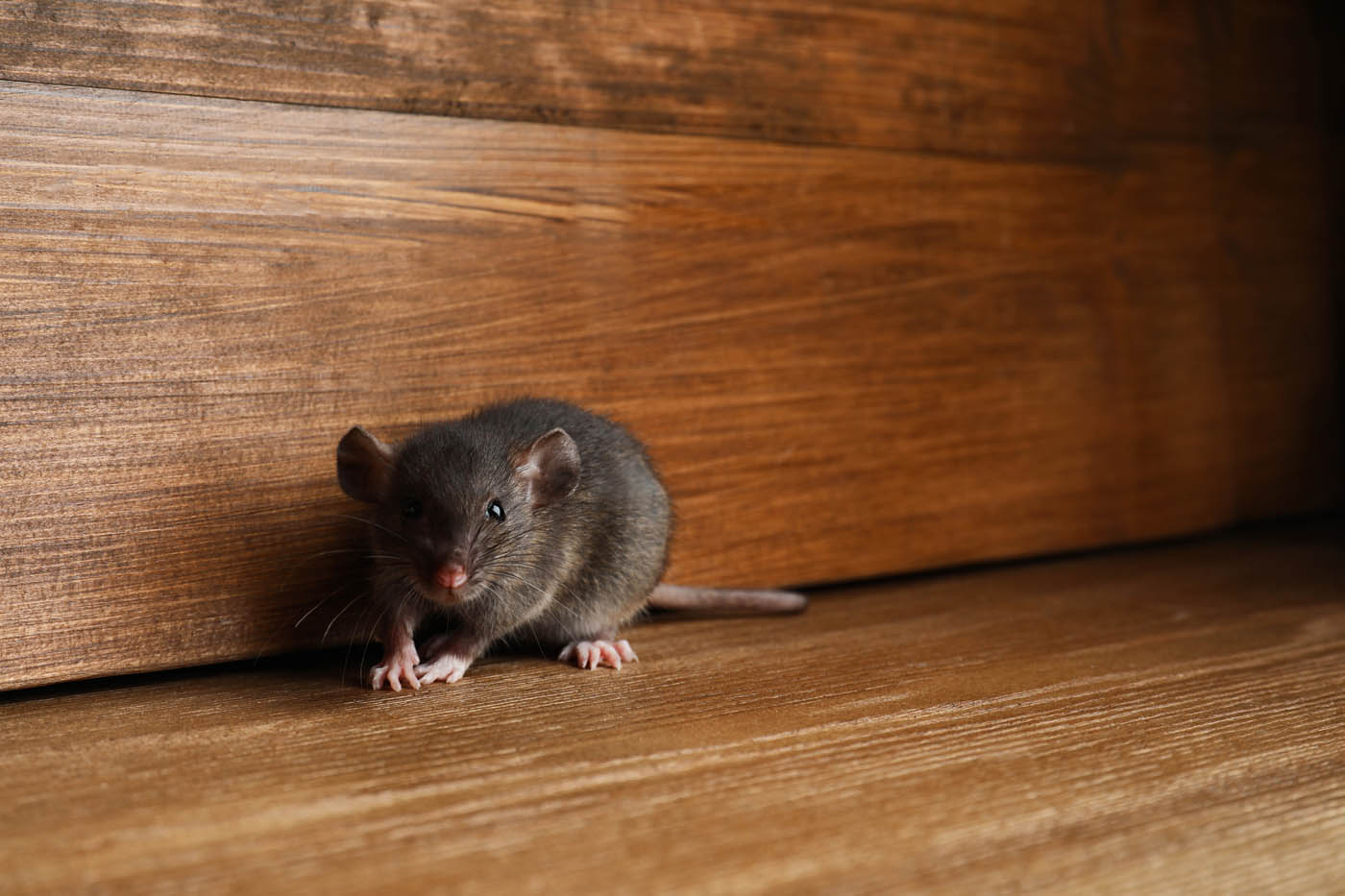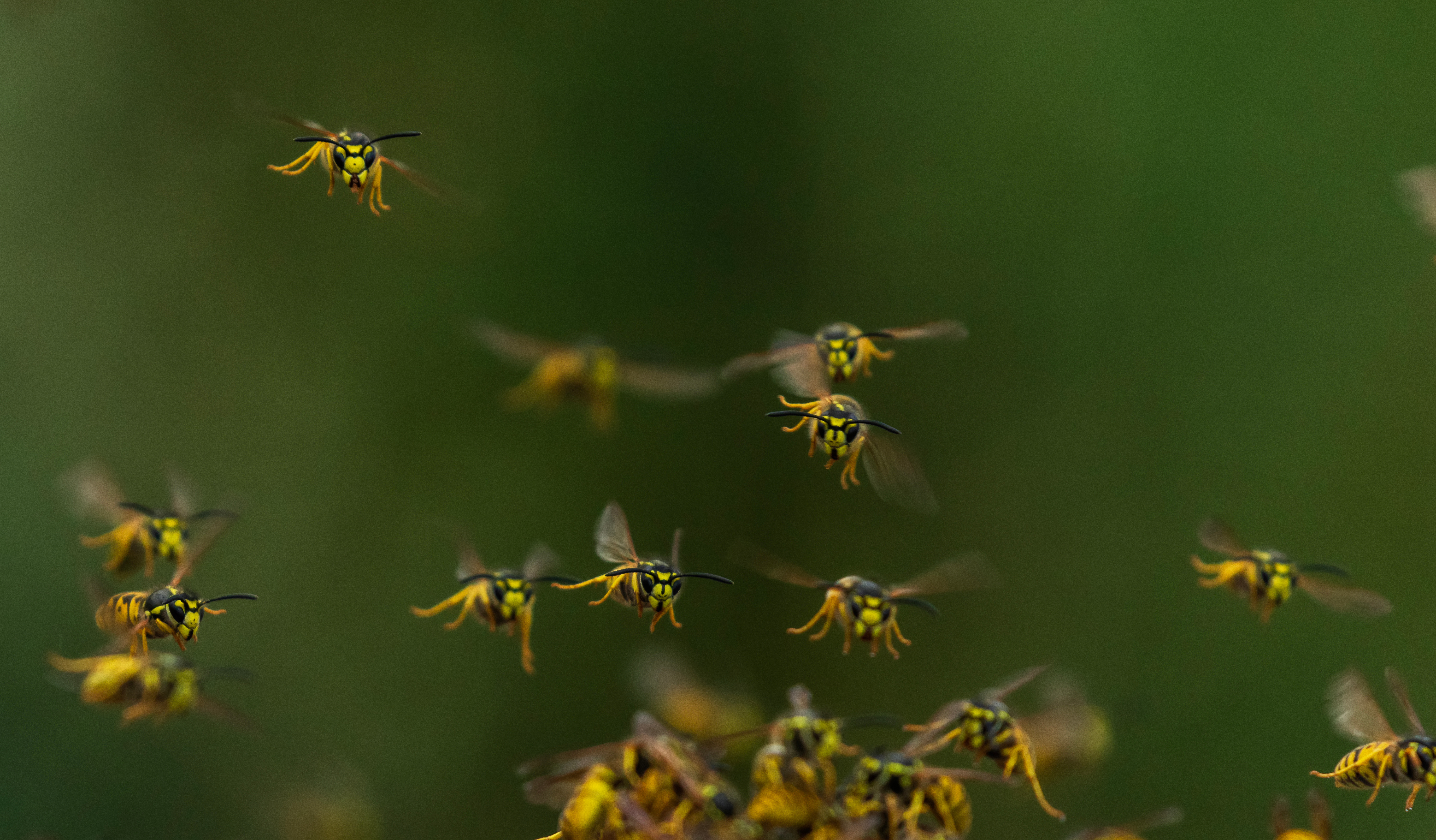Identify Your Pest
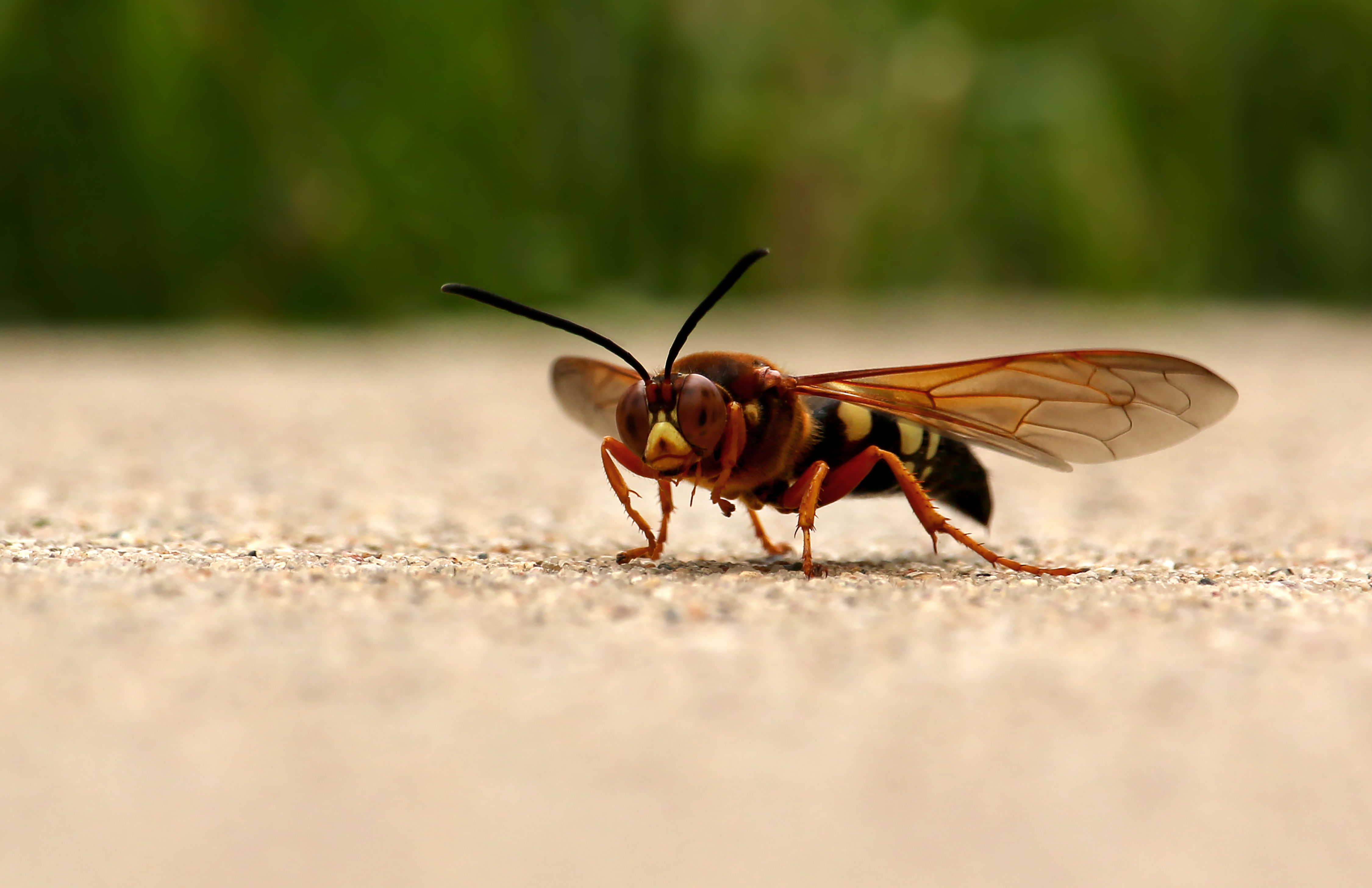
Cicada Killer
Cicada killers are large solitary wasps, with females growing up to 1.5 inches long and males about half that size. They have black abdomens with three yellow bands, dark brown heads and thoraxes, and transparent reddish-brown wings. These wasps dig burrows in flat, sandy soil, creating a U-shaped mound of dirt around the entrance as they build their nests.
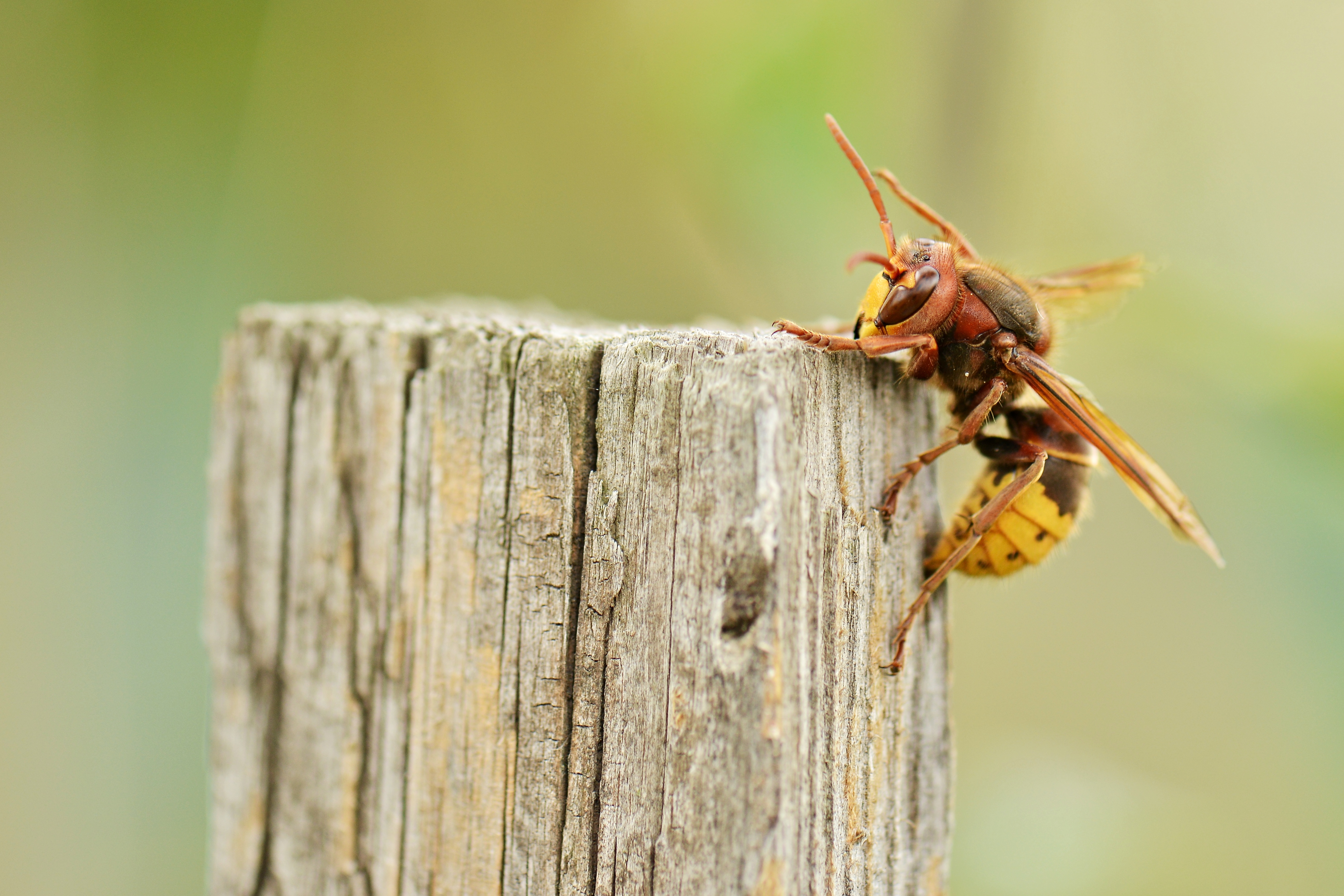
Hornets
Hornets are a large species of wasp, about 1 to 1.5 inches long, with dark brown bodies and yellow or yellow-orange striping. They are social insects, building large, tan, papery nests and growing colonies of about 300 to 500 wasps. While hornets are generally calm when foraging for food, they can become aggressive if their nest is disturbed.
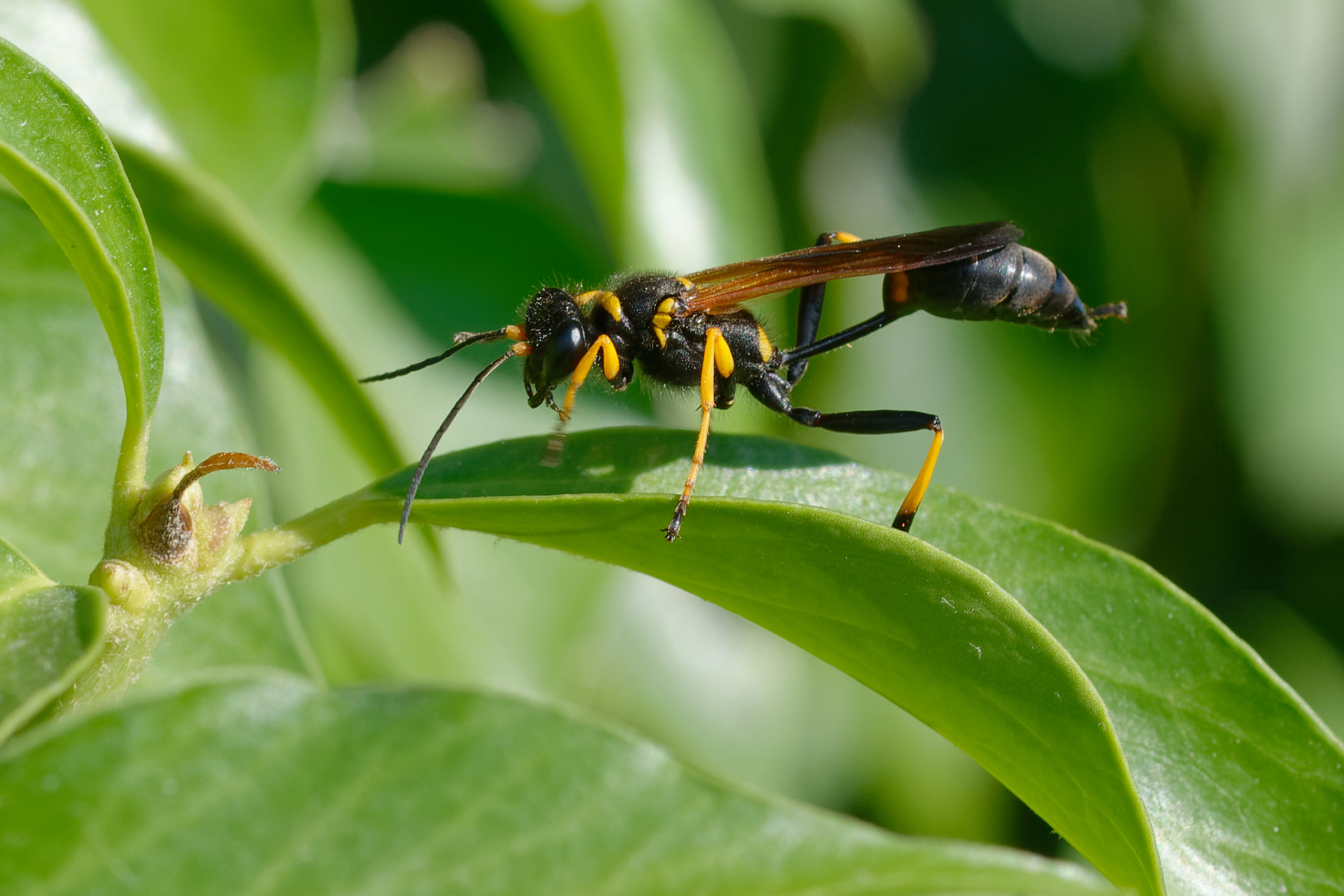
Mud Dauber
Mud daubers are long, slender wasps with narrow, thread-like waists and bodies that are either solid blue, black, or black with yellow markings. Females collect mud to build nests, shaping it into smooth or tubular structures on walls, ceilings, and other sheltered surfaces. These solitary insects are unlikely to sting but can be unsettling and aggressive if threatened or mishandled.

Yellowjackets
Yellowjackets are smaller wasps, with workers reaching about ½ inch long and queens growing up to ¾ inch. They have shiny black and bright yellow banded bodies, with strong mouthparts used to chew insects and sip nectar, fruit, and other sweet liquids. This wasp species is considered one of the most aggressive, capable of stinging multiple times and attacking in large numbers if their nest is disturbed.

Cicada Killer
Cicada killers are large solitary wasps, with females growing up to 1.5 inches long and males about half that size. They have black abdomens with three yellow bands, dark brown heads and thoraxes, and transparent reddish-brown wings. These wasps dig burrows in flat, sandy soil, creating a U-shaped mound of dirt around the entrance as they build their nests.

Hornets
Hornets are a large species of wasp, about 1 to 1.5 inches long, with dark brown bodies and yellow or yellow-orange striping. They are social insects, building large, tan, papery nests and growing colonies of about 300 to 500 wasps. While hornets are generally calm when foraging for food, they can become aggressive if their nest is disturbed.

Mud Dauber
Mud daubers are long, slender wasps with narrow, thread-like waists and bodies that are either solid blue, black, or black with yellow markings. Females collect mud to build nests, shaping it into smooth or tubular structures on walls, ceilings, and other sheltered surfaces. These solitary insects are unlikely to sting but can be unsettling and aggressive if threatened or mishandled.

Yellowjackets
Yellowjackets are smaller wasps, with workers reaching about ½ inch long and queens growing up to ¾ inch. They have shiny black and bright yellow banded bodies, with strong mouthparts used to chew insects and sip nectar, fruit, and other sweet liquids. This wasp species is considered one of the most aggressive, capable of stinging multiple times and attacking in large numbers if their nest is disturbed.
